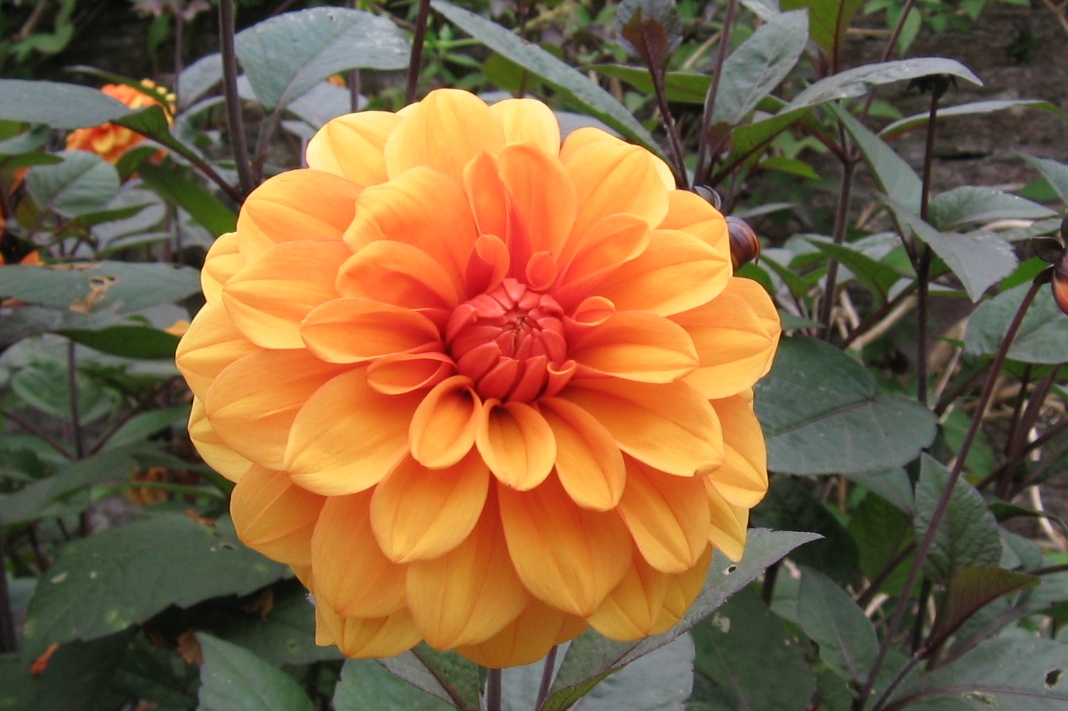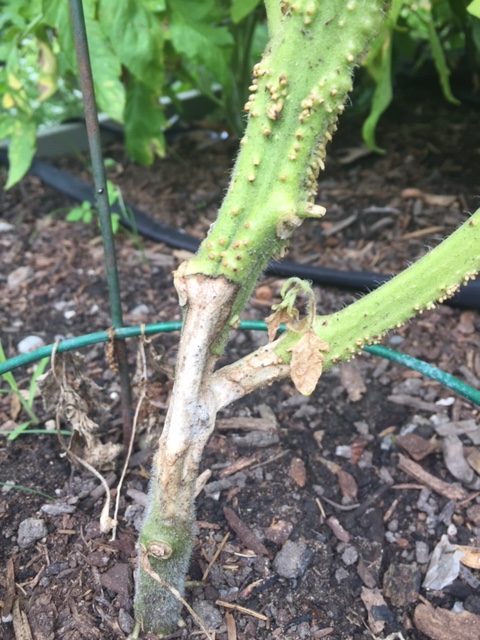Tanya Crowell says that “August is usually a very happy time in my garden. The days are hot but nights are often cooler and lots is in bloom, including crocosmia, coneflowers, balloon flowers, dianthus, phlox, monarda and grasses. A time to enjoy the garden in all its splendor.”
Judy Harris tells us “I think it is important to keep the August garden looking fresh by
weeding, dead-heading & trimming any foliage that is dying or looking
tired. I also like to stake plants such as dahlias, that are toppling over. I continue to fertilize my annuals to keep them producing blooms and to keep them looking fresh. Watering helps as it is often dry in August. I try to have somelate flowering perennials which will bloom in Aug/Sept (phlox, Russian sage, anemones, mums & asters), annuals & bulbs/tubers (dahlias).”

Including dahlias in your garden gives you blooms till frost. Judy Harris suggests that August is a good time to stake dahlias if they are toppling over. Also give them fertilizer to keep them blooming.
Carol Anderson is having some vegetable garden problems. I noticed that some of my tomato plants were beginning to yellow and wilt. Closer examination revealed that the stem had turned brown. I realized that the plants were effected by verticillium wilt.
When verticillium wilt attacks the tomato plant, the stem darkens about 10 to 12 inches above the soil line and the leaves turn yellow. It can occur anytime during the development of the plant but it is most common during the fruit-producing stage.
Verticillium is caused by a fungus which works its way up through the plants roots preventing the plant from conducting water and at the same time it spreads toxins which wilt the leaves, starving the plant.
The fungus thrives in cool temperatures and when the soil is wet, which describes the weather we have had for the past few weeks. What I have done so far is remove the yellow wilted leaves to help open the plant up a bit so it has air flow and will not hold the moisture so easily. Although the fruit on these plants may be smaller, it is still edible.
To prevent verticillium wilt next year, I will destroy all the plants next fall and I will plant the tomatoes in a different part of the garden.
Lori Groves describes herself as an “avid backyard food gardener”. My vegetable patch needs extra attention throughout the summer. I spend a lot of time on maintenance activities like weeding, monitoring for pests and diseases, watering and training the plants onto supports. Each day there is something to harvest.
The main pests visiting my vegetables this summer are Japanese beetles (Popillia
japonica Newman) on the bush bean foliage, and the worms of the small
Cabbage White butterfly (Pieris rapae) on the brassicas. I manage these insects by
manually picking them off, and in the case of the beetle, with pheromone traps on the
upwind side of the vegetable garden.
Many of the plants benefit from structural supports:
● The cucumbers and cucamelons grow up a string trellis affixed within a fence
gate
● The beans grow through a horizontal grid of string trellis attached to the 4 corner
posts of a raised bed
● The gourds climb 2 ladders assembled into an inverted ‘V’ structure● Pea tendrils grasp onto bamboo stake tripods
● Tomatoes are supported by increasing levels of jute twine interwoven between
each plant, with the jute anchored to T-bars at the end of the row.

Tomatoe are supported by increasing levels of jute twine interwoven between each plant. T-bars are anchored at the end of the row.
● Peppers are housed in tomato cages
The vertically supported vegetable plants benefit from extra sun exposure and air flow,
and this also lets me grow more in less space.

The gourds climb 2 ladders assembled in a “V” structure. Note the Sweet alyssum seeded beneath the plants.
For something new in the vegetable garden this year, I planted by seed the cover crop
Crimson clover (Trifolium incarnatum) amongst the tomatoes, and all of the squash hills
were seeded with a circle of Sweet alyssum (Lobularia maritima). My strategy was to fix
nitrogen in the soil for these heavy feeders, as well as to suppress weeds and attract
more pollinators. Last year, a few squash succumbed to blossom end rot which I
attribute to incomplete pollination. So far the cover crops and their vegetable
companions are both thriving.
I find that my relationship with food grown in my garden is much stronger than with food
purchased at the grocery store. After planning, planting and nurturing, the harvest is
very meaningful and rewarding. Nothing goes to waste. It is incredibly satisfying to
create recipes, cook, share and eat the herbs, vegetables and fruits. My family’s
consumption of healthy produce increases and meal times are more interesting. And
importantly for me, growing my own food fosters a strong connection to nature.


